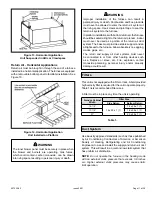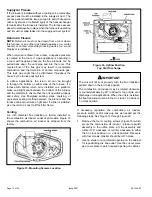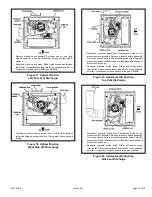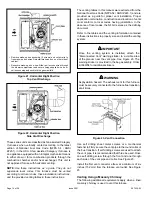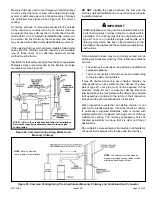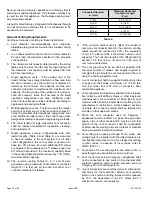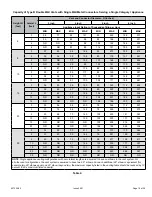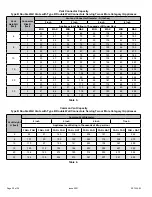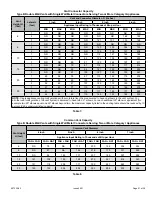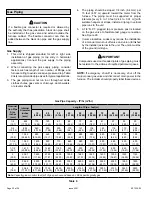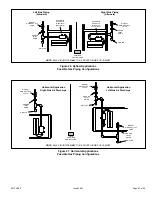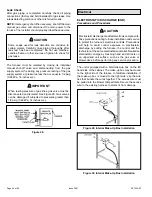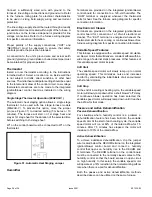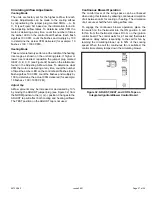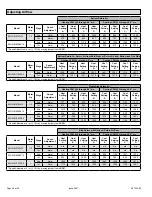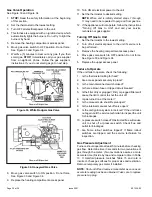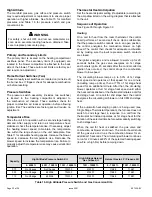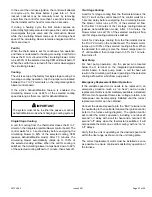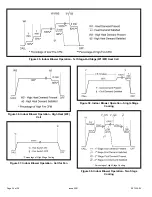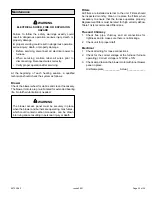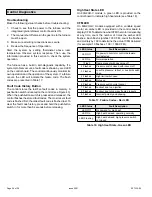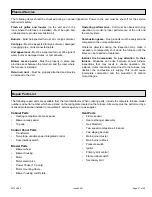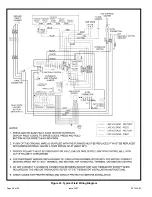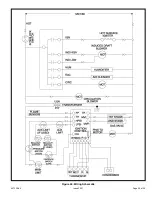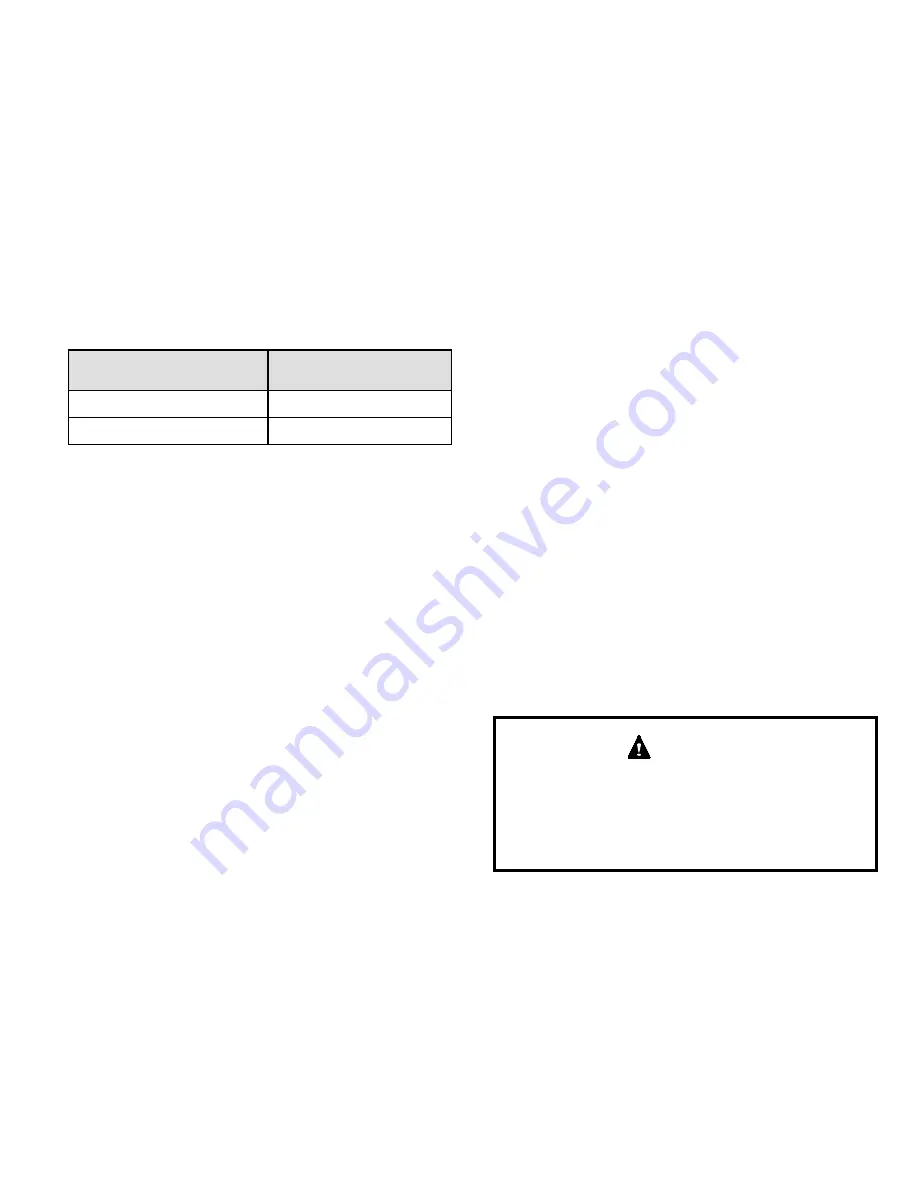
507335-02
Page 25 of 39
Issue 2001
Refer to Figure 44 for schematic wiring diagram and
troubleshooting and Figure 43 for field wiring.
1. The power supply wiring must meet Class I restrictions.
Protected by either a fuse or circuit breaker, select
circuit protection and wire size according to unit
nameplate.
NOTE:
Unit nameplate states maximum current draw.
Maximum over current protection allowed is shown in
2. Holes are on both sides of the furnace cabinet to
facilitate wiring.
3. Install a separate (properly sized) disconnect switch
near the furnace so that power can be turned off for
servicing.
Table 10.
Capacity
Maximum Over-Current
Protection (Amps)
070AV12
15
090BV16, 110CV20
20
4. Before connecting the thermostat, check to make sure
the wires will be long enough for servicing at a later
date. Make sure that thermostat wire is long enough to
facilitate future removal of blower for service.
5. Complete the wiring connections to the equipment.
Use the provided unit wiring diagram and the field
wiring diagram shown in Figure 43. Use 18 gauge
wire or larger that is suitable for Class II rating for
thermostat connections.
6. Electrically ground the unit according to local codes or,
in the absence of local codes, according to the current
National Electric Code (ANSI/NFPA No. 70). A green
ground wire is provided in the field make-up box.
NOTE:
This furnace contains electronic components
that are polarity sensitive. Make sure that the furnace
is wired correctly and is properly grounded.
7. One line voltage “ACC” 1/4” spade terminal is provided
on the furnace integrated control. Any electronic air
cleaner or other accessory rated up to one amp can
be connected to this terminal with the neutral leg of the
circuit being connected to one of the provided neutral
terminals. See Figure 43 for control configuration.
This terminal is energized when the indoor blower is
operating.
8. One line voltage “HUM” 1/4” spade terminal is provided
on the furnace integrated control. Any humidifier rated
up to one amp can be connected to this terminal with
the neutral leg of the circuit being connected to one
of the provided neutral terminals. See Figure 43 for
control configuration. This terminal is energized in the
heating mode whenever the combustion air inducer is
operating.
9. Install the room thermostat according to the instructions
provided with the thermostat. If the furnace is being
matched with a heat pump, refer to the instruction
packaged with the dual fuel thermostat.
Indoor Blower Speeds
1. When the thermostat is set to “FAN ON,” the indoor
blower will run continuously at approximately 50%
of the second stage cooling speed when there is no
cooling or heating demand. See Table 12 for allowable
continuous circulation speeds.
2. When this unit is running in the heating mode, the
indoor blower will run on the heating speed designated
by the positions of DIP switches 1 (A,B,C,D) of the
HEAT jumper plug.
3. When there is a cooling demand, the indoor blower will
run on the cooling speed designated by the positions
of DIP switches (A, B, C, D) of the COOL jumper plug.
Generator Use - Voltage Requirements
The following requirements must be kept in mind when
specifying a generator for use with this equipment:
•
The furnace requires 120 volts ± 10% (Range: 108
volts to 132 volts).
•
The furnace operates at 60 Hz ± 5% (Range: 57 Hz
to 63 Hz).
•
The furnace integrated control requires both polarity
and proper ground. Both polarity and proper grounding
should be checked before attempting to operate the
furnace on either permanent or temporary power.
•
Generator should have a wave form distortion of less
than 5% RHD.
Electrical Wiring
Risk of electrical shock. Disconnect electrical power
at the circuit breaker or service panel before making
electrical connections. Failure to disconnect power
supplies can result in property damage, personal injury,
or death.
WARNING
The furnace must be grounded and wired in accordance
with local codes or, in the absence of local codes, with the
National Electrical Code ANSI/NFPA No. 70 (latest edition)
and/or CSA C22.1 Electrical Code (latest edition) if an
external electrical source is utilized.
In all instances, other than wiring for the thermostat,
the wiring to be done and any replacement of wire shall
conform with the temperature limitation for Type T wire
–63°F (35°C) rise.

